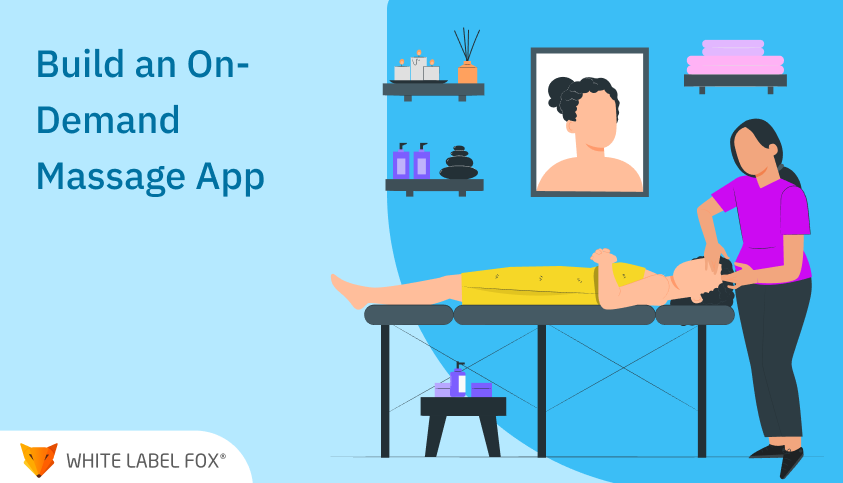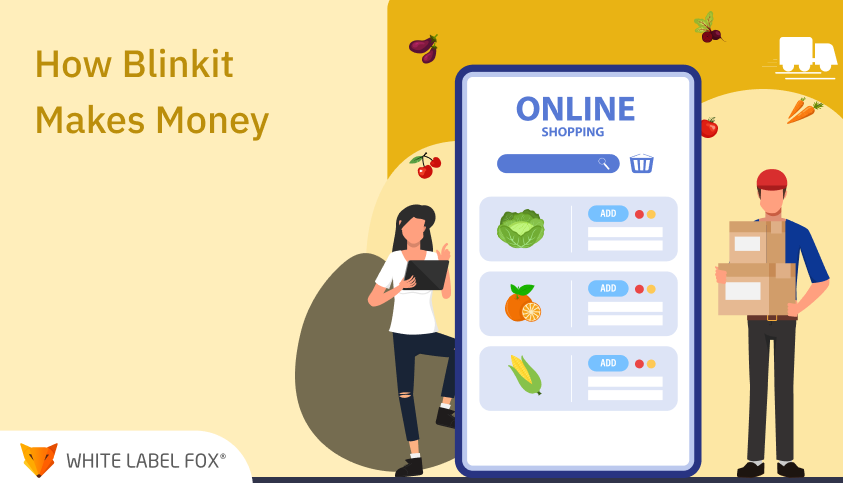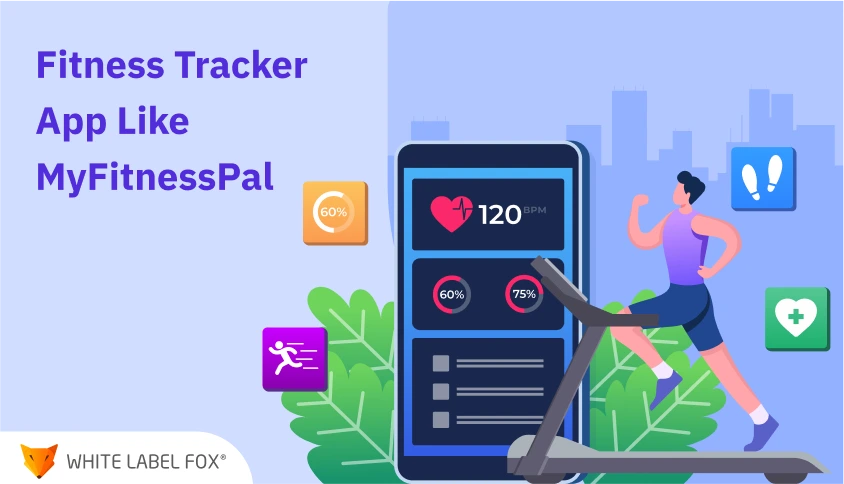Build an On-Demand Uber Massage App For Startup Business
Recently, the concept of on-demand app development gaining unbelievable attention in the whole industry, since the uber become successful.
We can say that the on-demand delivery services such as grocery delivery, food delivery, medicine delivery have great market segments.
Now, talking about the on-demand uber massage is also a profitable venture, because of the rise of the on-demand massage services.
Today, this is the most popular trend because in the fast and busy life people want massage when they extremely tired and wish to relax. People hate or don’t in the mood to go to a spa or massage parlor.
With the Uber Massage app, people can book massage services with few taps of a button and get the services done at the doorstep.
The Growing Market of On-Demand Uber Massage Industry
According to Statista, the spa industry in the United States generated 16.3 billion U.S. dollars in revenue.
The reasons for the massage is for seeking spa treatments ranged from medical reasons and pain relief to relaxation and stress relief, or even just to indulge and pamper.
The massage market did not include only tourist and relaxation client; but also including physical therapist-patient.
Now, let’s see the feature and development cost of the Uber Massage App
Features Include in Uber for Massage App Development
For the User App:
Login
A user can log in through their social account such as Facebook, Google or via Email.
Schedule Service
After selecting the service, users can schedule services based on their needs.
Payment Option
A user has a flexible payment option such as cash, card or wallet to pay for the services.
Manage Profile
A user can manage their profile information such as name, password, address, and profile picture.
Easy Call
If a user has any query regarding the services, they can call a provider within the app.
Review & Rating
After complete the services, the user can give reviews and ratings to a provider based on their provided service.
History
A user can view service history with all details. Also, they can re-request the service with a single tap.
For Provider App:
Manage Services
A provider can manage their services, they have the option to accept/reject a new service request.
Manage Profile
A provider can manage their profile information such as name, address, service radius, and profile picture.
Earning Report
A provider can see their earning report with all complete, cancel, running, and pending service requests.
Manage bank Details
A provider can manage their bank account details such as debit/credit information to withdraw cash.
FeedBack
A provider has the option to view their feedback given by the user with all the details.
How Much Cost to Develop Uber Massage App?
The Uber massage app development cost is dependent on various factors such as features, technology platforms and most important thinks in which location you want to develop your app.
If you want to develop both Android and iOS for the spa app, the development cost is increasing. Also, if you want some customized features in your app the development cost is raised.
White Label Fox is a leading web and app development company in India. We offer uber clone script, Gojek clone script, food delivery clone, and other applications for a startup business.
If you have an idea to develop a massage app, we will make your dream come true! We deliver the best uber massage app for your spa business. If you are interested then feel free to contact us!
Frequently Ask Questions
An on-demand Uber massage app is a mobile platform that connects users
with professional massage therapists for on-demand appointments. Similar
to Uber’s ride-sharing model, users can book a massage session through
the app, choose a therapist, and have them come to their location for a
massage, whether at home, the office, or other preferred settings.
Key features include:
- User profiles: Users can create profiles to manage
bookings, payment methods, and massage preferences.
- Therapist profiles: Therapists can create profiles
detailing their services, availability, and pricing.
- Real-time booking: Users can check the therapist's
availability and book appointments instantly.
- Location tracking: Track therapists in real-time to
ensure timely arrivals.
- Secure payments: Integrated payment systems (credit card,
mobile wallet) for smooth transactions.
- Ratings and reviews: Users can rate and review therapists
to build trust and quality assurance.
- User profiles: Users can create profiles to manage bookings, payment methods, and massage preferences.
- Therapist profiles: Therapists can create profiles detailing their services, availability, and pricing.
- Real-time booking: Users can check the therapist's availability and book appointments instantly.
- Location tracking: Track therapists in real-time to ensure timely arrivals.
- Secure payments: Integrated payment systems (credit card, mobile wallet) for smooth transactions.
- Ratings and reviews: Users can rate and review therapists to build trust and quality assurance.
The cost of developing an on-demand massage app varies based on
features, platforms (iOS, Android), and complexity. Generally, a basic
app may cost between $10,000 to $40,000, while a more advanced app with
integrated payment systems, live tracking, and therapist management
features may cost $50,000 or more. Customization and third-party
integrations can also impact the total cost.
Technologies required include:
- Mobile development frameworks: Swift for iOS, Kotlin for
Android, or cross-platform solutions like React Native.
- Backend technologies: Node.js, Ruby on Rails, or Python
for handling real-time data.
- Payment gateway integration: Stripe, PayPal, or other
secure payment systems.
- Real-time tracking: Google Maps API for therapist
tracking and location services.
- Push notifications: For appointment reminders and
real-time updates.
- Cloud storage: AWS, Firebase, or Google Cloud for app
data and profile storage.
- Mobile development frameworks: Swift for iOS, Kotlin for Android, or cross-platform solutions like React Native.
- Backend technologies: Node.js, Ruby on Rails, or Python for handling real-time data.
- Payment gateway integration: Stripe, PayPal, or other secure payment systems.
- Real-time tracking: Google Maps API for therapist tracking and location services.
- Push notifications: For appointment reminders and real-time updates.
- Cloud storage: AWS, Firebase, or Google Cloud for app data and profile storage.
To ensure security and privacy:
- Use encryption: Encrypt all sensitive user data,
including payment details and personal information.
- Secure authentication: Implement multi-factor
authentication (MFA) and secure login methods for users and
therapists.
- Payment security: Integrate PCI-compliant payment
gateways to protect credit card details.
- Data privacy: Comply with GDPR or local data privacy
regulations to safeguard user data.
- Review processes: Regularly audit and update app security
measures.
- Use encryption: Encrypt all sensitive user data, including payment details and personal information.
- Secure authentication: Implement multi-factor authentication (MFA) and secure login methods for users and therapists.
- Payment security: Integrate PCI-compliant payment gateways to protect credit card details.
- Data privacy: Comply with GDPR or local data privacy regulations to safeguard user data.
- Review processes: Regularly audit and update app security measures.
Revenue models for the app can include:
- Commission-based: Charge a commission fee on each booking
made through the app.
- Subscription plans: Offer subscription services where
users pay a monthly or yearly fee for discounted sessions.
- In-app purchases: Offer premium services like upgraded
massages, extended sessions, or special packages.
- Tips and gratuity: Allow users to tip therapists directly
through the app.
- Advertisement: Include in-app ads to generate additional
revenue from third-party businesses.
- Commission-based: Charge a commission fee on each booking made through the app.
- Subscription plans: Offer subscription services where users pay a monthly or yearly fee for discounted sessions.
- In-app purchases: Offer premium services like upgraded massages, extended sessions, or special packages.
- Tips and gratuity: Allow users to tip therapists directly through the app.
- Advertisement: Include in-app ads to generate additional revenue from third-party businesses.
To promote your app:
- App store optimization (ASO): Use relevant keywords in
the app title and description to improve app store ranking.
- Social media marketing: Leverage platforms like Instagram
and Facebook to highlight massage services and promotions.
- Referral programs: Encourage users to invite friends by
offering discounts or free sessions.
- Collaborations: Partner with fitness centers, spas, and
wellness influencers to promote the app.
- Local SEO: Target location-specific ads and SEO
strategies to reach users within your service area.
- App store optimization (ASO): Use relevant keywords in the app title and description to improve app store ranking.
- Social media marketing: Leverage platforms like Instagram and Facebook to highlight massage services and promotions.
- Referral programs: Encourage users to invite friends by offering discounts or free sessions.
- Collaborations: Partner with fitness centers, spas, and wellness influencers to promote the app.
- Local SEO: Target location-specific ads and SEO strategies to reach users within your service area.
Challenges may include:
- Therapist verification: Ensuring all therapists are
licensed and qualified to provide services.
- Location-based services: Managing geographical
limitations and availability of therapists in different regions.
- Payment security: Ensuring smooth and secure financial
transactions for both users and therapists.
- Competition: Standing out in a crowded market with
established players.
- Regulatory compliance: Adhering to local laws and health
regulations regarding massage therapy services.
- Therapist verification: Ensuring all therapists are licensed and qualified to provide services.
- Location-based services: Managing geographical limitations and availability of therapists in different regions.
- Payment security: Ensuring smooth and secure financial transactions for both users and therapists.
- Competition: Standing out in a crowded market with established players.
- Regulatory compliance: Adhering to local laws and health regulations regarding massage therapy services.
To scale your app:
- Expand service areas: Gradually expand your service area
to reach more users and therapists.
- Increase therapist recruitment: Hire more therapists to
meet growing demand and diversify service offerings.
- Add features: Introduce new features like loyalty
programs, wellness tips, or subscription models to attract more
users.
- Improve user experience: Continuously improve the app's
interface and functionality based on user feedback.
- Marketing expansion: Invest in marketing campaigns across
multiple platforms to increase brand visibility and user
acquisition.
- Expand service areas: Gradually expand your service area to reach more users and therapists.
- Increase therapist recruitment: Hire more therapists to meet growing demand and diversify service offerings.
- Add features: Introduce new features like loyalty programs, wellness tips, or subscription models to attract more users.
- Improve user experience: Continuously improve the app's interface and functionality based on user feedback.
- Marketing expansion: Invest in marketing campaigns across multiple platforms to increase brand visibility and user acquisition.

















